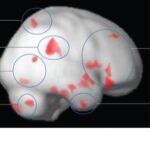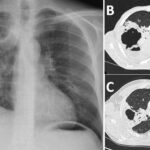A psychotic disorder is a serious mental health condition that affects an individual’s perception of reality, leading to significant disruptions in thought processes, emotions, and behaviors. Individuals with psychotic disorders often experience hallucinations, delusions, and disorganized thinking, which can severely impact their ability to function in daily life. Understanding the different types, causes, symptoms, and treatment options for psychotic disorders is crucial in managing the condition effectively and improving the quality of life for those affected.

Types of Psychotic Disorders
Psychotic disorders encompass a broad range of mental health conditions, each with its unique symptoms and causes. Some of the most common types include:
1. Schizophrenia
Schizophrenia is one of the most well-known psychotic disorders, characterized by persistent hallucinations, delusions, and disorganized speech or behavior. It often develops in late adolescence or early adulthood and can be a lifelong condition that requires ongoing treatment.
2. Delusional Disorder
In delusional disorder, individuals experience delusions (false beliefs) that are not grounded in reality. These delusions are often paranoia-related or involve a fixed belief in things like being persecuted or having a special mission in life, without any evidence to support them.
3. Brief Psychotic Disorder
Brief psychotic disorder involves a sudden onset of psychosis, typically triggered by a traumatic event or severe stress. The symptoms may last for a few days to a month, and most individuals return to their baseline mental health following treatment.
4. Schizoaffective Disorder
Schizoaffective disorder is a hybrid condition that combines symptoms of schizophrenia with mood disorder symptoms, such as depression or mania. Individuals with this disorder experience both psychotic episodes and mood disturbances.
5. Substance-Induced Psychotic Disorder
This type of psychosis occurs as a result of substance use, whether through drugs, alcohol, or medication. It may also be triggered by withdrawal from substances.
6. Psychotic Disorder Due to a Medical Condition
Some medical conditions, such as brain tumors, neurological disorders, or certain infections, can trigger psychotic symptoms. In these cases, treating the underlying medical issue can alleviate the psychotic symptoms.
Symptoms of Psychotic Disorder
The symptoms of psychotic disorders can vary widely depending on the type of disorder and the individual. However, common symptoms often include:
- Hallucinations: These are sensory experiences that occur without any external stimulus. The most common form is visual or auditory hallucinations, where individuals hear voices or see things that are not present.
- Delusions: False beliefs that remain fixed despite evidence to the contrary. These delusions are often paranoid (e.g., thinking someone is plotting against them) or grandiose (e.g., believing they have special abilities or powers).
- Disorganized Thinking: This may manifest as incoherent speech or difficulty in organizing thoughts, which makes it challenging for the individual to communicate effectively.
- Disorganized or Abnormal Motor Behavior: This can include a lack of movement, excessive movement, or behaviors that seem out of context or inappropriate for the situation.
- Negative Symptoms: These refer to a decrease in the ability to function in daily life, such as social withdrawal, lack of motivation, and diminished emotional expression.
Causes of Psychotic Disorder
Psychotic disorders can be caused by a combination of genetic, biological, and environmental factors. Understanding the underlying causes is essential for determining the most effective treatment options.
1. Genetic Factors
A family history of psychotic disorders, particularly schizophrenia, increases the risk of developing a psychotic disorder. Specific genes that influence neurotransmitter systems, such as dopamine and serotonin, have been implicated in some forms of psychosis.
2. Brain Abnormalities
Research suggests that individuals with psychotic disorders may have structural and functional abnormalities in the brain. These include changes in areas responsible for memory, perception, and emotional regulation, such as the prefrontal cortex and limbic system.
3. Neurotransmitter Imbalances
Dysregulation of neurotransmitters, such as dopamine and glutamate, plays a key role in the onset of psychosis. High dopamine activity, in particular, is associated with many psychotic symptoms.
4. Substance Abuse
Certain substances, including recreational drugs (e.g., LSD, marijuana, methamphetamine) and alcohol, can induce psychosis. Long-term drug use can lead to permanent changes in brain chemistry, further exacerbating symptoms.
5. Environmental Stressors
Trauma, significant stress, and abuse during early childhood or adulthood can trigger or exacerbate psychotic episodes, particularly in individuals already predisposed to mental health issues.
Diagnosing Psychotic Disorders
Accurately diagnosing a psychotic disorder is essential for effective treatment. Diagnosis typically involves:
- Comprehensive psychiatric evaluation: A detailed assessment of the individual’s symptoms, medical history, and family history.
- Physical exams and lab tests: To rule out other medical conditions or substance abuse that may be contributing to psychosis.
- Psychological assessments: These include standardized tests and interviews designed to assess the individual’s cognitive functioning, thought processes, and emotional state.
- Neuroimaging: In some cases, MRI or CT scans may be used to examine brain structure and rule out neurological conditions.
Treatment for Psychotic Disorder
Treatment for psychotic disorders generally involves a combination of medications and psychotherapy, with the goal of managing symptoms, improving quality of life, and promoting recovery. The treatment approach varies based on the specific type of psychotic disorder and the severity of symptoms.
1. Medications
Medications are often prescribed to manage the symptoms of psychotic disorders, particularly antipsychotic medications, which are the cornerstone of treatment.
- Antipsychotics: These medications, such as clozapine, risperidone, and olanzapine, are used to manage delusions, hallucinations, and other psychotic symptoms. They work by blocking dopamine receptors in the brain, which can help regulate thought processes.
- Mood Stabilizers and Antidepressants: In cases of schizoaffective disorder or co-occurring mood disorders, mood stabilizers and antidepressants may be prescribed to help manage mood fluctuations.
- Cognitive Enhancers: For individuals with cognitive deficits, certain medications may be used to enhance brain function and improve memory, attention, and reasoning skills.
2. Psychotherapy
Psychotherapy is an essential part of managing psychotic disorders, helping individuals understand their condition and cope with the challenges they face.
- Cognitive Behavioral Therapy (CBT): This is the most widely used form of psychotherapy for psychotic disorders. CBT helps individuals identify and challenge distorted thoughts and beliefs, offering strategies to cope with delusions and hallucinations.
- Family Therapy: Involving family members in the treatment process can improve communication, reduce stress, and provide essential support.
- Social Skills Training: This aims to improve social interactions and help individuals reintegrate into society.
3. Hospitalization and Supportive Care
For individuals experiencing severe symptoms or in crisis, hospitalization may be required. Inpatient care provides a safe environment for stabilization and intensive monitoring. Supportive care, including assistance with daily activities and emotional support, is also crucial in long-term recovery.
Prognosis and Outlook
The prognosis for individuals with psychotic disorders varies widely. Some individuals can achieve a full recovery, particularly with early intervention and ongoing treatment. However, psychotic disorders are typically chronic, requiring long-term management. The key to better outcomes lies in a combination of pharmacological treatment, psychotherapy, and strong social support systems.
Frequently Asked Questions
What is a psychotic disorder?
A psychotic disorder is a mental health condition where an individual loses touch with reality, experiencing symptoms such as hallucinations and delusions.
Can psychotic disorders be treated?
Yes, psychotic disorders can be managed with medications, therapy, and support. Early intervention is key to better outcomes.
What causes psychotic disorders?
Psychotic disorders may be caused by genetic factors, brain abnormalities, neurotransmitter imbalances, substance abuse, or environmental stressors.
How long do psychotic episodes last?
The duration of psychotic episodes varies. Some may last a few days, while others can persist for months or even years without treatment.
Are psychotic disorders genetic?
Genetic factors can increase the risk of developing a psychotic disorder, especially if there is a family history of conditions like schizophrenia.
Psychotic disorders represent a complex group of conditions that require thorough understanding and compassionate care. By recognizing the symptoms early, accurately diagnosing the disorder, and implementing effective treatment strategies, we can help individuals manage their condition and lead fulfilling lives.

